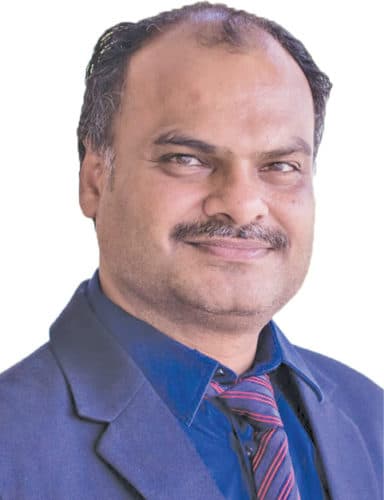System integrators (SIs) have a unique understanding of both the information technology and operational technologies. Just a smart positioning of their existing relationships with technology players and understanding of their end-customers’ pain points can help them win in the Internet of Things (IoT) landscape. Sandeep Agarwal, senior vice president and head of Global Center of Excellence for IoT (COE-IoT), Happiest Minds Technologies, shared with Syeda Beenish of EFY advantages vs opportunities for the SI community to lead IoT penetration in India. Excerpts…

Q. Do you see technology companies taking the IoT directly to customers?
A. The IoT is more of an eco-system play, which is mostly fronted by SI. It not just about technology, but the system, change management and integrating with operational technologies. Most importantly, a strong domain expertise is required to make sense and use of data collected by this vast sensor embedded in different aspects of businesses. There is no one-size-fits-all solution, hence technology companies will not be able to directly take a solution and address all challenges of an enterprise or an industry.
It’s more of a collaboration between system integrators, technology partners, platform players, OEMs and to a good extent customers themselves to analyse business challenges, priorities, requirements, digital journey and define return on investment (RoI). The technology may contribute just about 30-40 per cent but defining the business priorities and working with process consultants and OEMs are crucial. Also, system integrators will be able to draw insights from data for true actions and integration possibilities with legacy and new-age digital systems, which forms the rest of the contribution.
Q. How important is the role of system integrators for a country like India?
A. India is a vast country with different geographical conditions and language barriers (different dialects). No vendor community can have a bandwidth that could cover a country like India. Moreover, every business has different problems and priorities (cost optimisation, customer happiness, increase in revenues, new business models, etc). The amount of hand-holding, customisation and personalisation required at the customers’ premises to best fit the IoT can be managed by system integrators. Series of workshops are required with different stakeholders in the customer’s organisation.
Q. What are the best practices for system integrators to be a part of this game?
A. This is the era of mass customisation and mass personalisation. Unlike conventional SI wherein integration was done like an ERP system, the context here is different and often challenges comes from sensors, devices and gateways that are now becoming your backbone to get data on the move. So SI has to be flexible as well to understand the real pain points of customers and make them part of the solution definition. IoT SIs would have to have tremendous knowledge to integrate with customers’ current and legacy systems like CRMs and ERPs to help them make a seamless transition in this IoT journey.
Coming to localisation, who better than SI to know the ground customer connect? The vendor/technology community can bring the best practices from other sites and countries, but localising to address local business challenges and language barriers is the key and an advantage enjoyed by SIs. If system integrators are open to learn and bring the best of global technologies and combine with customised localisation, they can play a big role in this digital transition.
The IoT is not something which an SI partner will deploy and stop, it’s a continued activity. Today, it cannot be deployed without truly DevOps integrated deployments. Devices need to be managed, which also increases the complexity of a field deployment, service, maintenance, manageability, upgrades, etc. So the SI for the IoT has to not only manage the IT infrastructure but the real devices on the field.
Q. What is the typical investment for a system integrator to lead the IoT deployment?
A. To design the right architecture, platforms and devices, system integrators need to have large labs, process consultants, data analytics people, process experts, workshop and ability to understand customer problems. There is an inherent investment in working with customers to do customised implementation to address customer problems either in terms of cost optimisation, downtime reduction, increased efficiency, new revenue streams and empowering people at all levels to take decisions based on data at their hand, available almost real-time.










